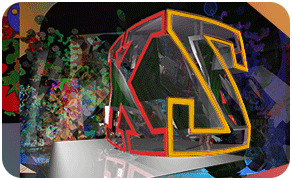Wednesday, October 02, 2013
Amazing Animation for a Milk Commercial
New Zealand-based creative agency Assembly
rounds-up a herd of glass cows in this spot for Anchor, showing a new
bottle design that prevents any damage to the milk from sunlight.
46 1/2 Hours of Free Mudbox DVD's From Wayne Robson
These tutorials are from Mudbox DVD's about earlier versions. These basics are here, if not some advanced techniques. Take a look.
http://www.mudboxlive.com/
http://www.mudboxlive.com/
German BioRap Project Investigates 3D Printed Blood Vessel Networks
Researchers with the Fraunhofer Institute in Munich, Germany are using a combination of 3D printing and multiphoton polymerization to take their first steps into the bioengineering of blood vessels. Their research is officially called the "BioRap" project and they plan to present it at the Biotechnica Fair in Hannover, Germany on October 11-13.
The Fraunhofer blood vessel networks are important for a number of reasons; their successful development could one day lead to the end of animal testing or even to 3D printed transplantable organs like hearts and kidneys. There's just one problem: right now scientists can print out small groups of cells and get them to organize into something like a kidney. What they can't do is print out large groups of cells and keep them alive because the cells on the inside die from lack of food and oxygen. The research teams at Fraunhofer are working to solve that problem by creating printable blood vessel networks.
 Dr. Günter Tovar
Dr. Günter TovarOnce the Fraunhofer Institute can print the vascular networks they will be able to create tissue samples on demand. Those tissue samples may one day replace animal testing because they can provide more accurate results for scientists who want to test out new treatments or vaccines. After that, the work on printing fully functional organs begins; something that experts say may be around fifteen to twenty years away. The Fraunhofer Institute isn't the only place working to create 3D printed vascular networks though. Scientists at Wake Forest, Organovo and Rice University are working on similar projects.
From 3D Printer World 10/01/13
Tutorial: Create a Game CharacterJ Jouster by Adam Fisher
This two-part tutorial shows a basic workflow for setting up a character for a game using Maya, ZBrush and Photoshop. Of course it's easily adaptable to 3ds max and Mudbox.
http://www.3dtotal.com/index_tutorial_detailed.php?id=1763#.UkxT4BAih8H
http://www.3dtotal.com/index_tutorial_detailed.php?id=1763#.UkxT4BAih8H
 MMST 3ds Max Class Blog
MMST 3ds Max Class Blog

